A weekend in Budapest: The Perfect 2-Day Itinerary for History, Baths, and Architecture
If you’re looking for a perfect European weekend getaway, Budapest is an amazing place to visit. It offers the ideal mix of relaxation, history, and stunning architecture. The capital is split by the Danube River into Buda and Pest. Hungary’s capital is both elegant and vibrant. It’s a place where you can soak in century-old baths in the morning and enjoy lively cafés by night. Check out this guide for a perfect weekend in Budapest to get some inspiration on what to visit!
Day 1 – Exploring the City and Its Landmarks
Walk around the city center
The buildings in Budapest are monumental. The beautiful architecture is worth the visit, and just walking around the city will give a great impression of it. As typical in European city centers, there’s plenty of small stores, restaurants, and lovely cafés to enjoy your walk.

St. Stephen’s Basilica
One of the key sights in Budapest is the St. Stephen’s Basilica, the largest church in the city. It’s a Roman Catholic church, with a neoclassical style and a dome that dominates the skyline. Inside the church, you’ll find intricate mosaics, stained glass, and the preserved right hand of St. Stephen, Hungary’s first king – one of the most significant relics in Hungary. You can also climb (or take the elevator) to the panoramic terrace for one of the best city views. Entering the church has a fee of 2400 Ft or around 6€ (2025). The terrace has an extra price of 2000 Ft.

Liberty square
On your way to the Parliament building, pass by the Liberty square, which has several monuments of the beginning of the 20th century and is surrounded by financial buildings.
Hungarian Parliament
Walk toward the Danube to reach the Hungarian Parliament, one of Europe’s most impressive legislative buildings. Its neo-Gothic spires and symmetrical façade look magnificent both by day and when illuminated at night. it’s absolutely stunning! If you have time, join a guided tour to see the ornate halls and the Hungarian Crown Jewels. The Parliament’s visit costs 6500 Ft. (approx. 16€) for those of the European Economic Area or 13000 Ft. (approx. 33€) for those outside of it.
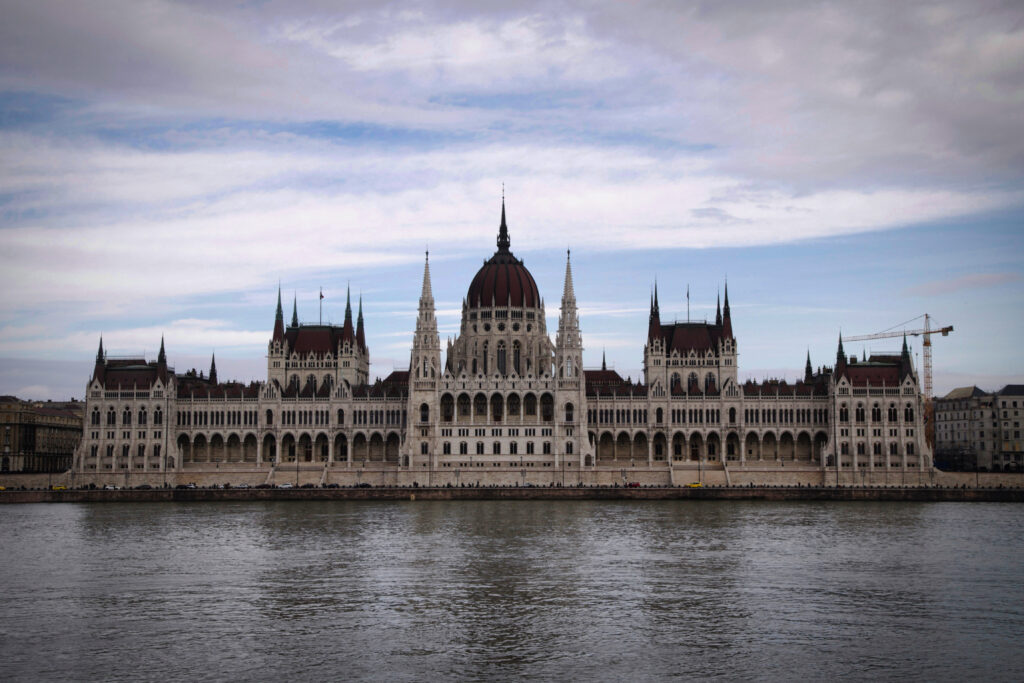
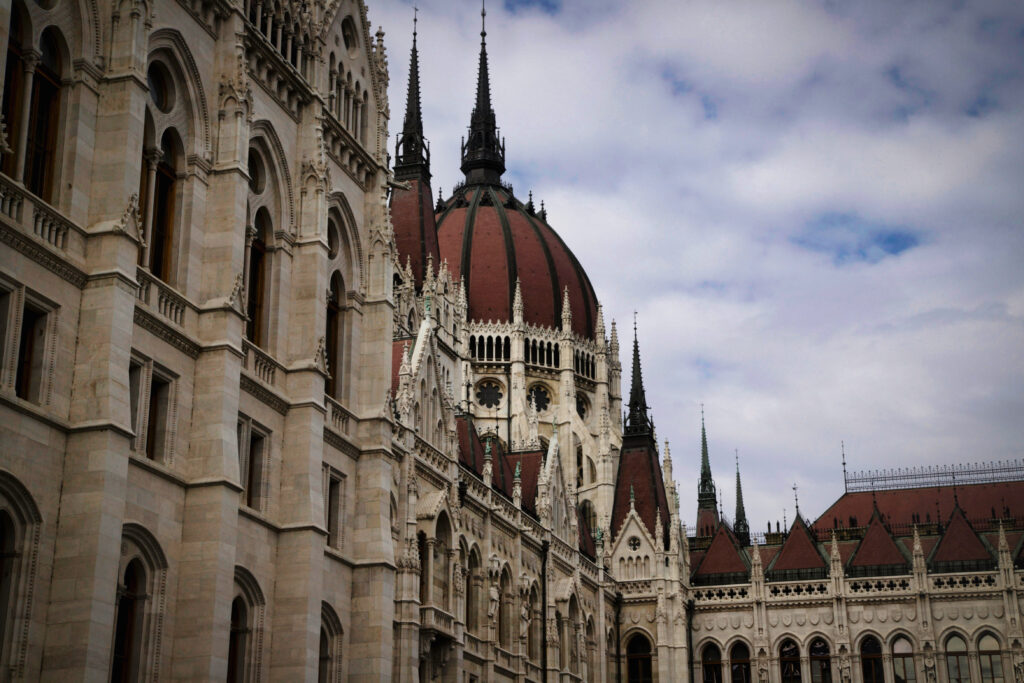
Danube Promenade
Before you leave this side of the river, you should check out the Shoes on the Danube Bank Memorial, a moving WWII tribute erected in 2005. This monument remembers the particular event, when people were ordered by the fascist militia to remove their shoes and were shot to fall down into the river. When I went, the shoes contained some objects, which I initially thought were trash left by someone insensitive, but then read online that it was things people would leave to remember the victims.
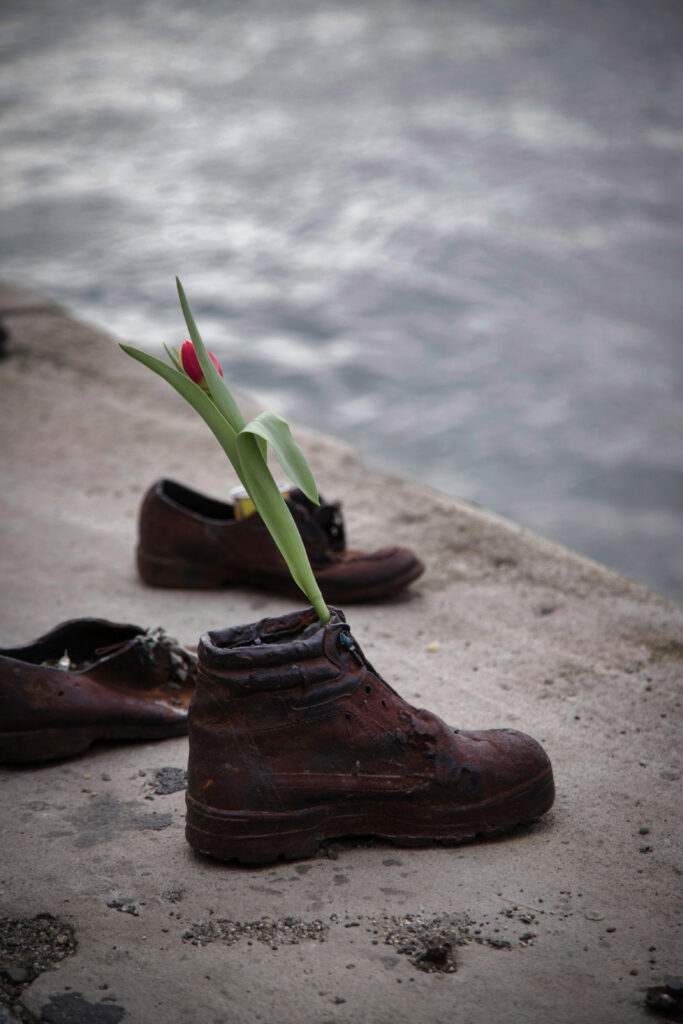
Baths
Budapest is famous for its thermal baths, and no trip is complete without visiting one. We visited the Széchenyi Baths in City Park, which are the most famous, with outdoor pools surrounded by yellow neo-baroque architecture. They are the largest spa bath in Europe, and consist of 15 indoor baths, and 3 outside swimming pools. I went outside of season, so could just buy the tickets for the baths on the day of, but if you’re going in summer, I’d recommend to book in advance. These baths are clothed (i.e., you need a swimsuit), and towels are only possible to be rented as part of a larger package. You can store your belonging in a locker or rent a cabin (in which you can change privately as well). Getting to the baths is a cool experience, and the building is very well-worth a visit.
Another famous baths are the Gellért Baths, known for their art nouveau interiors. They are however closed until 2028.
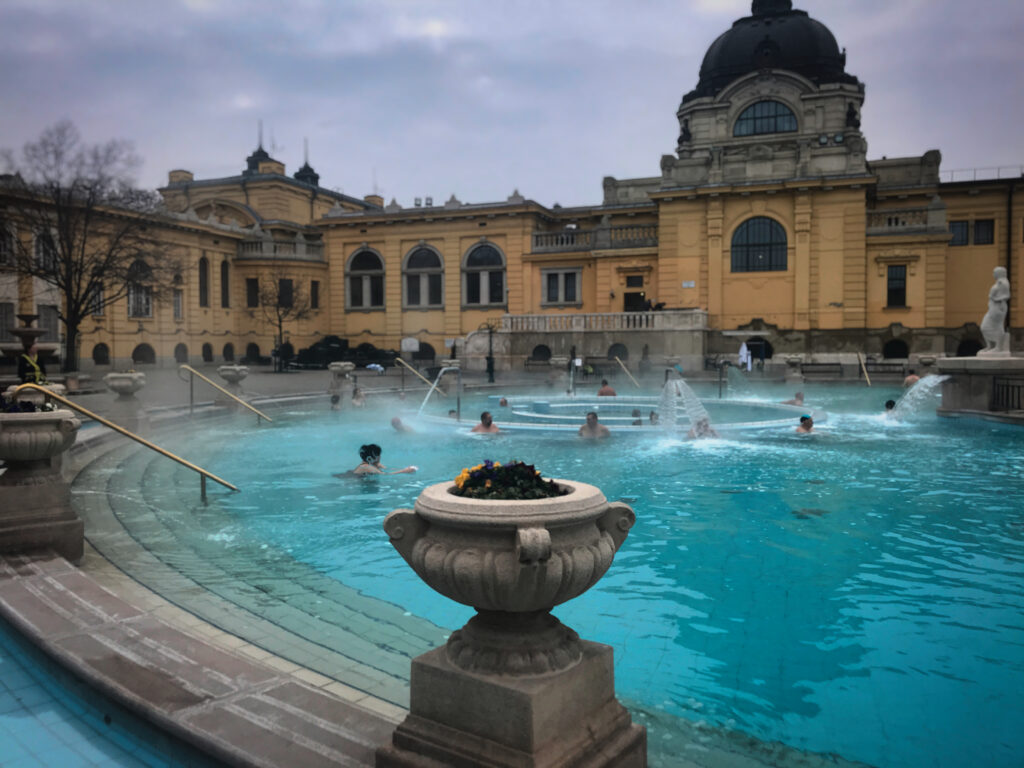
Széchenyi Chain Bridge
It’s one of Budapest’s symbols and connects Buda and Pest. Great for photos, especially at sunset or night when lit.
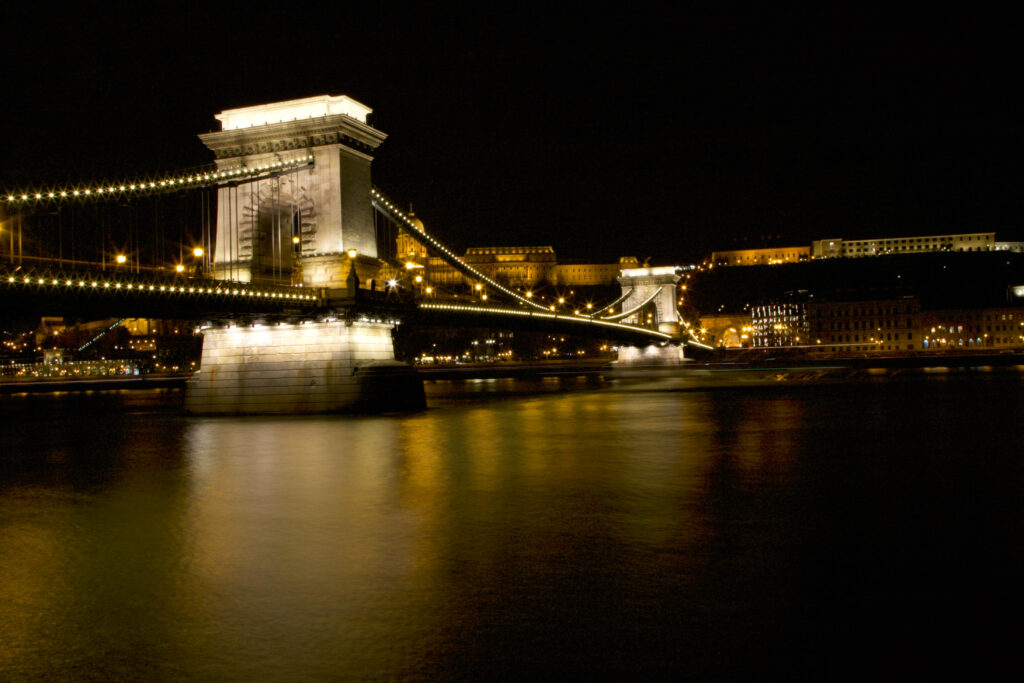
Day 2 – The Buda Side: Castles and Views
Fisherman’s bastion
Your second day is perfect to explore the other side of the river, the Buda side. Take the metro or cross the Széchenyi Chain Bridge to reach the Fisherman’s bastion, the first destination of the day. There, you can climb to Fisherman’s Bastion, one of Budapest’s most iconic spots. The towers offer sweeping views of the city and the Parliament across the river. Right next to it stands Matthias Church, a gothic masterpiece with colorful roof tiles and ornate details.
The Fisherman’s bastion is part of the Buda castle, and was built in the 19th century. It’ a UNESCO World Heritage and costs 1500 Ft. (around 4€) to visit the turrets and terraces (card only). Apart from visiting the terraces, you can explore the cave system or the actual Buda castle, which located 15 min away from the Fisherman’s bastion.
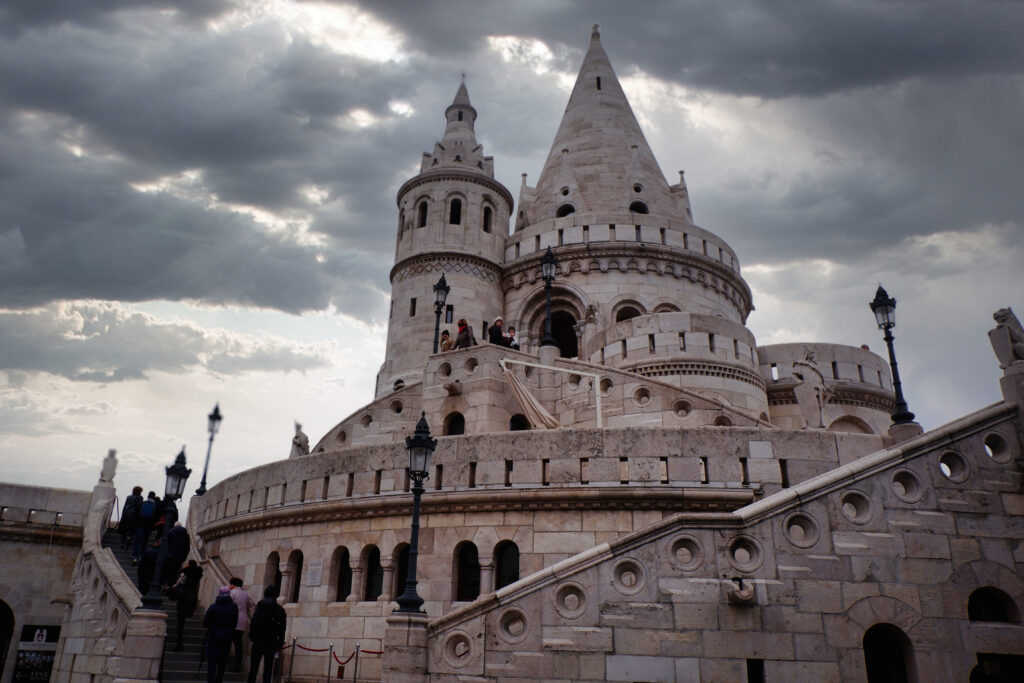

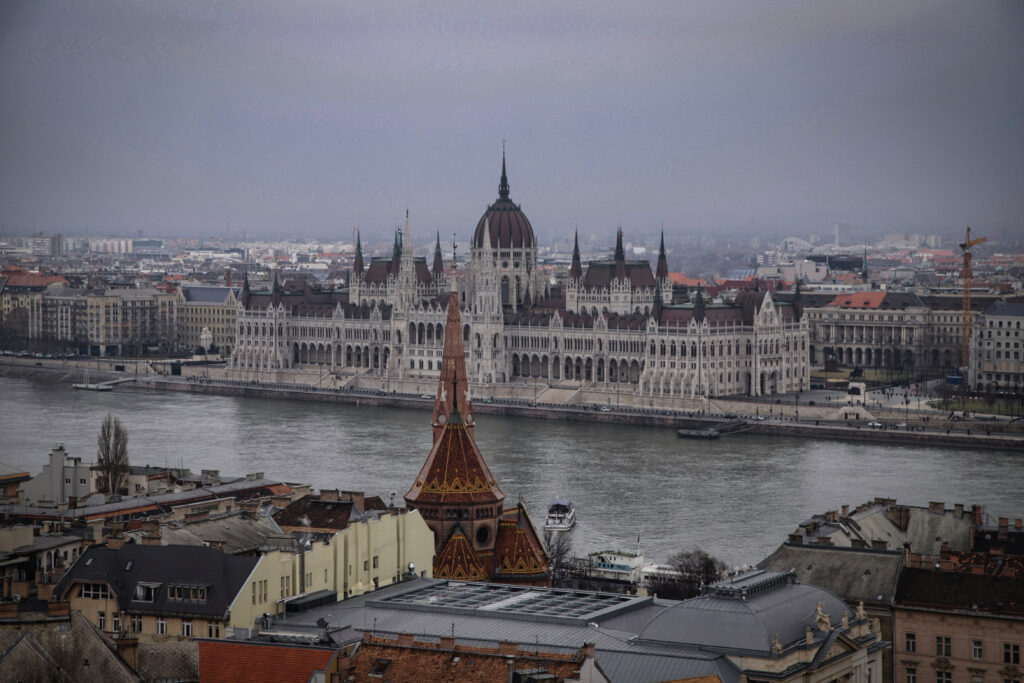
Central Market Hall
Another interesting stop you can add is the Central Market Hall, a vibrant indoor market filled with local food, spices, and souvenirs. It’s a bit far from the rest of the attractions, so you can walk (it takes around 40 min from the FIsherman’s bastion), or you can take the metro, which still takes 30 min but leaves you less tired. However, in the market you can try traditional Hungarian specialties such as lángos (fried dough with sour cream and cheese), paprika sausages, and Tokaji wine. The upper level has stalls with crafts and gifts to take home.

Dohány Street Synagogue
Finish your weekend with a visit to the Dohány Street Synagogue, the largest in Europe. It’s an important cultural and historical site, housing a museum that documents the history of Hungarian Jews. The courtyard holds the Holocaust Memorial Tree of Life. The tickets cost 13,000 Ft (around 33€), which is quite pricey. Since it’s a religious building be aware of dressing appropriately (e.g., no shorts or cropped tops).

Personal highlights
I really enjoyed Budapest – it’s a gorgeous city! I would totally go back there and visit the museums I did not have time to check out on my first visit. While I really liked the vibe of the city, my favourite parts would be:
- Parliament building: the architecture of it is really stunning.
- Fisherman’s bastion: this building really looks like it comes from a fairy tale, and it offers fantastic views of the city.
Practical Tips
Currency: Hungarian Forint (HUF or Ft.). While credit cards are widely accepted, it’s always good to have some small cash for markets and cafés.
Language: Hungarian, though English is common in tourist areas.
Getting around: Budapest’s public transport is excellent. The city center is also quite compact, but you may want to take public transport to reach both sides of the river. The 24 h card is only worth it if you do 6 trips or more, as the single ticket is 500 Ft.
Best time to visit: Spring (April–June) and autumn (September–October) for pleasant weather and fewer crowds.